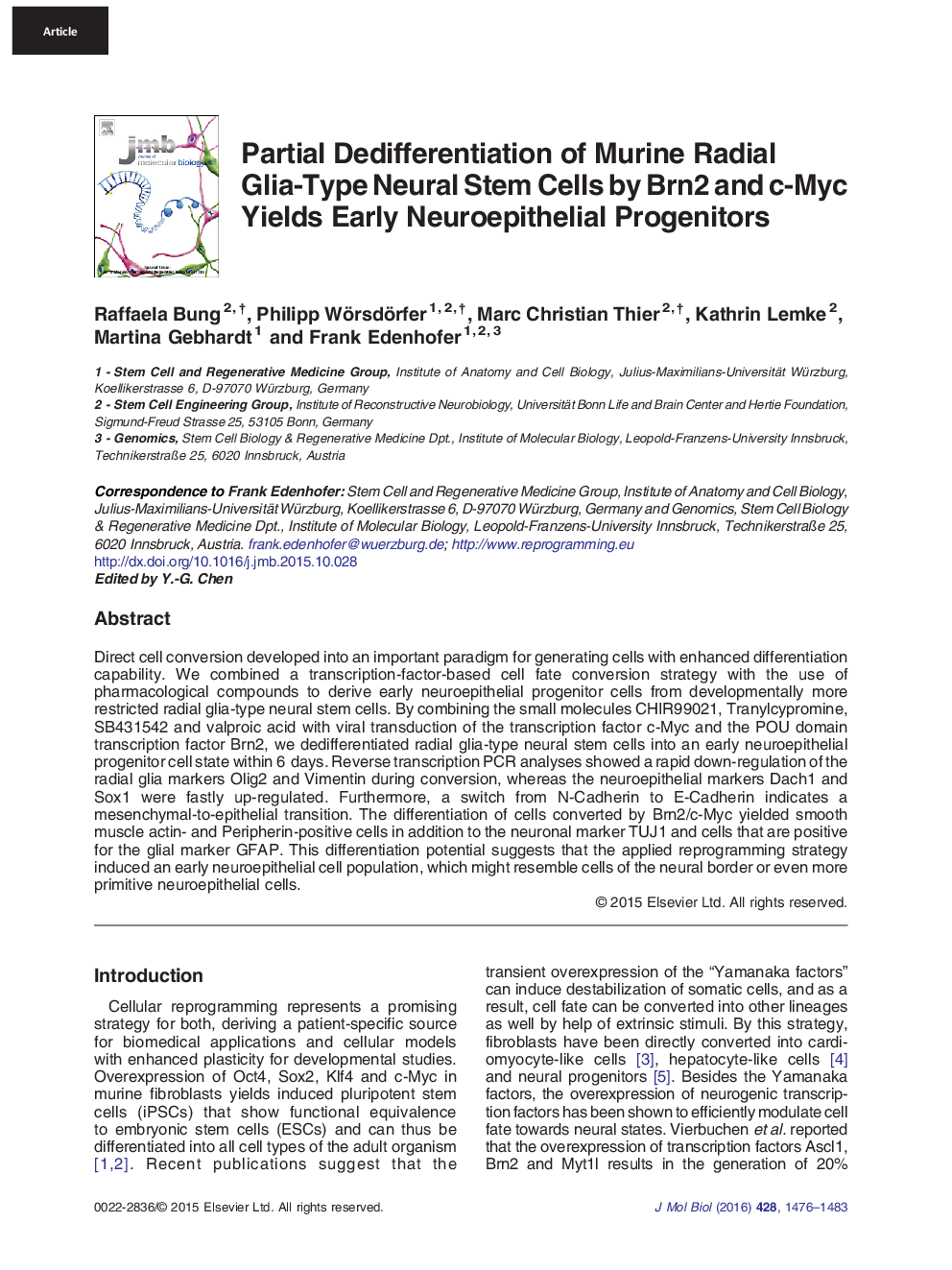| کد مقاله | کد نشریه | سال انتشار | مقاله انگلیسی | نسخه تمام متن |
|---|---|---|---|---|
| 2184238 | 1095810 | 2016 | 8 صفحه PDF | دانلود رایگان |

• Combined transcription-factor-based cell fate conversion strategy and pharmacological compounds enable partial dedifferentiation.
• Brn2 and c-Myc reprogram radial glia-type stem cells into immature neuroepithelial cells.
• Brn2/c-Myc reprogrammed neural cells differentiate into neural crest progeny.
Direct cell conversion developed into an important paradigm for generating cells with enhanced differentiation capability. We combined a transcription-factor-based cell fate conversion strategy with the use of pharmacological compounds to derive early neuroepithelial progenitor cells from developmentally more restricted radial glia-type neural stem cells. By combining the small molecules CHIR99021, Tranylcypromine, SB431542 and valproic acid with viral transduction of the transcription factor c-Myc and the POU domain transcription factor Brn2, we dedifferentiated radial glia-type neural stem cells into an early neuroepithelial progenitor cell state within 6 days. Reverse transcription PCR analyses showed a rapid down-regulation of the radial glia markers Olig2 and Vimentin during conversion, whereas the neuroepithelial markers Dach1 and Sox1 were fastly up-regulated. Furthermore, a switch from N-Cadherin to E-Cadherin indicates a mesenchymal-to-epithelial transition. The differentiation of cells converted by Brn2/c-Myc yielded smooth muscle actin- and Peripherin-positive cells in addition to the neuronal marker TUJ1 and cells that are positive for the glial marker GFAP. This differentiation potential suggests that the applied reprogramming strategy induced an early neuroepithelial cell population, which might resemble cells of the neural border or even more primitive neuroepithelial cells.
Figure optionsDownload high-quality image (68 K)Download as PowerPoint slide
Journal: Journal of Molecular Biology - Volume 428, Issue 7, 10 April 2016, Pages 1476–1483